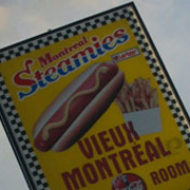(coauthored with Dylan Mulvin) “The Low Acuity for Blue: Perceptual Technics and American Color Television,” Journal of Visual Culture 13:2 (August 2014): 118-138.
This piece is the first of a pair of articles on colour television that Dylan Mulvin and I wrote together (the second has been accepted to Television and New Media and will appear in 2015 or later; an online, image-rich Scalar version will appear once we’re through copyedits). The work began, I think, in 2010, when I had an “oh, holy shit” moment while finishing up the MP3 book. What if everything I’d written about compression had happened already with video compression for colour television? Dylan was my research assistant and I sent him off to find out. He read up on the material, and based on what he found, I decided it didn’t transform my story so radically that I had to change it. But the material was really interesting. And there wasn’t much in terms of understanding colour TV as a cultural technology. So we dug in deeper and fanned out a bit, and produced two pieces. Along the way we got to know Susan Murray, who’s writing a whole book on the rise of colour TV in the US (her source materials are super cool to look at), and also got familiar with Carolyn Kane’s research on colour and video. (Andreas Fickers has a book on colour TV as well, but it’s in German). Of course, there’s tons of work on colour in cinema and art, but television and video are very different cases (as the four of us all argue), and it’s been a fun spinoff project. It also helped shape Dylan’s eventual dissertation direction: a history of the materials of commensurability. You know, like the actual kilogram.
So I can say that this project is a great example of how the Canadian grant system can work well: funding goes to a doctoral student, research gets enhanced and new directions emerge, and prof and student publish something together that they never would have alone.
